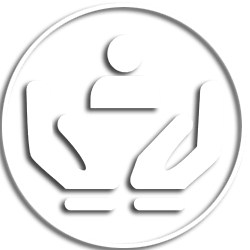Legal advice: Hit-and-run insurance tips every driver needs
Summary: When drivers face a hit-and-run, legal and insurance choices made in the first hours can determine financial and legal outcomes. This guide uses a real-world example to explain practical steps, the coverages to prioritize, and how to work with attorneys and investigators in 2025.
Understanding Hit-and-Run Legal Challenges in 2025
Maria, a commuter in El Paso, experienced a hit-and-run outside a grocery store. Security footage from a nearby camera and a neighbor’s quick witness statement turned a chaotic night into a solvable case. Attorney Daniela Labinoti’s insights underline that without video or witnesses, identification can be difficult.
- Problem: Perpetrators often leave before IDs can be recorded, complicating liability.
- Legal barrier: Proving fault requires evidence — plates, footage, or witness testimony.
- Practical solution: Promptly collect any footage and witness contacts; preserve phone videos and messages.
Key insight: Preserving evidence immediately improves chances of identification and claim success.
Essential Insurance Coverages After a Hit-and-Run
Daniela stresses the importance of comprehensive protection. Many drivers discover gaps only after an incident. Knowing which optional coverages can cover you when the at-fault driver is unknown is crucial.
- Uninsured/Underinsured Motorist Coverage: Pays for your losses when the other driver is unknown or lacks adequate insurance.
- Personal Injury Protection (PIP) and Med Pay: Covers immediate medical costs regardless of fault.
- Collision or Comprehensive Add-ons: Help repair your vehicle when the at-fault party cannot be located.
Explore plain-language explanations to decode policy wording and exclusions before you need them with our guide on insurance terms. Also check how driving history affects premiums in our piece about driving records and rates.
Key insight: The right combination of Uninsured Motorist, PIP, and Med Pay can prevent major out-of-pocket costs after a hit-and-run.
Practical Steps to Identify Perpetrators and Gather Evidence
In Maria’s case, a local store’s surveillance camera and a social post on a neighborhood platform helped identify the vehicle. Platforms similar to FitFam are increasingly useful for crowdsourced evidence in 2025.
- Check nearby cameras: Ask businesses and traffic cameras for footage immediately.
- Collect witness data: Get names, phone numbers, and any short video statements from bystanders.
- Use social media: Post a fact-based request for witnesses — community platforms often accelerate tips.
Key insight: Rapid, organized evidence collection multiplies the chances of identifying the at-fault driver.
Working with Attorneys, Investigators and Filing Claims
Attorney involvement can streamline interactions with insurers and law enforcement. Daniela notes that attorneys often use subpoena powers or investigative resources to obtain footage and records that individuals cannot access alone.
- When to call an attorney: Significant injuries, disputed liability, or uncooperative insurers.
- What attorneys do: Coordinate evidence collection, interact with law enforcement, and negotiate with insurers.
- Costs vs. benefits: Many attorneys work on contingency for personal injury claims; evaluate upfront.
Key insight: Early attorney involvement can recover more evidence and improve settlement outcomes.
Digital Tools, Business Risks and Cross-Industry Lessons
Businesses and individuals alike must protect digital evidence and prepare policies for incidents. For businesses, cybersecurity and data handling intersect with physical incident response.
- Store footage retention: Encourage local businesses to retain video for at least 30 days.
- Business continuity: Learn from digital risk guides to manage evidence and liability when incidents involve third parties.
- Policy alignment: Understand exclusions by reading resources like policy exclusions explained.
Key insight: Cross-referencing business and personal risk plans reduces evidence loss and shortens resolution timeframes.
Practical checklist for drivers after a hit-and-run
- Ensure safety: Move to a safe location and call emergency services if needed.
- Document: Take photos of damage, road position, and surroundings immediately.
- Ask for help: Request witness names and footage from nearby businesses.
- Notify insurer: Report the claim and ask about your uninsured motorist and Med Pay options.
- Contact an attorney: If injuries or disputes arise, consult a lawyer experienced in motor vehicle claims.
Key insight: A step-by-step checklist reduces mistakes that delay claims or legal action.
How industry tools and services can help
Several modern services can accelerate claims and legal processes. Tools branded here can guide policy selection, evidence collection, and legal navigation.
- LegalEase — Simplifies understanding basic legal steps after an incident.
- InsureWise — Compares coverages to spot gaps in your policy.
- LawPilot — Connects you with specialized attorneys for quick consultations.
- AdviceGuard — Offers on-demand guidance for immediate next steps.
- CounselCover and ClaimCounsel — Help manage claims and negotiate with insurers.
- JurisSecure, LegalNavigator, SafeLaw and LawShield — Provide layered protection from legal pitfalls.
Key insight: Combining technology platforms and legal counsel creates a stronger post-incident strategy.
For homeowners who store vehicles on private property or face property-related claims after collisions, consult targeted advice like homeowners insurance guidance. Businesses should review their liability protections, including topics covered in employment practices liability if staff or contractors are involved.
Key insight: Broaden your review beyond auto policies to ensure all connected risks are covered.
What immediate steps should I take after a hit-and-run?
Ensure safety first, call emergency services if needed, document damage with photos, seek witnesses, and report to police and your insurer as soon as possible. Preserve any videos and ask nearby businesses for surveillance footage.
Will uninsured motorist coverage help after a hit-and-run?
Yes. Uninsured/Underinsured Motorist coverage often covers bodily injury and vehicle damage when the at-fault driver cannot be identified or lacks insurance. Check your policy limits and exclusions to confirm specifics.
How can an attorney help with hit-and-run cases?
An attorney can obtain evidence, liaise with law enforcement, negotiate with insurers, and file civil claims if needed. Early consultation improves the chance of securing necessary records and a fair settlement.
Yes. Community platforms and neighborhood groups can surface witnesses and blurry footage that lead to identification. Be factual in posts to avoid misinformation and preserve legal credibility.


